Nd Filter What Does It Do ?
A neutral density (ND) filter is a type of camera filter that reduces the amount of light entering the lens without affecting the color or hue of the image. It is essentially a darkened piece of glass or resin that is placed in front of the lens to block some of the light. ND filters are commonly used in photography and videography to achieve certain creative effects or to control exposure in bright conditions. By reducing the amount of light, ND filters allow for longer exposure times, which can create motion blur effects, smooth out water or clouds, or capture light trails. They are also useful in situations where a large aperture is desired for shallow depth of field, but the lighting conditions are too bright.
1、 Definition and Purpose of ND Filters
An ND filter, also known as a neutral density filter, is a camera accessory that reduces the amount of light entering the lens without affecting the color or hue of the image. It achieves this by evenly attenuating all wavelengths of light, hence the term "neutral density."
The primary purpose of an ND filter is to allow photographers and videographers to control the exposure of their images or footage in situations where there is too much light. By reducing the amount of light entering the lens, an ND filter enables the use of wider apertures, slower shutter speeds, or both, without overexposing the image. This is particularly useful in bright outdoor conditions or when shooting long exposures in low-light situations.
ND filters come in different strengths, usually measured in stops, which indicate the amount of light they block. Common strengths include ND2 (1 stop), ND4 (2 stops), ND8 (3 stops), and so on. Some filters are also variable, allowing for adjustable light reduction.
In addition to exposure control, ND filters can also be used creatively to achieve certain effects. For example, they can be used to create motion blur in moving subjects, such as waterfalls or flowing rivers, by using longer shutter speeds. They can also be used to capture wide-aperture shots in bright sunlight, resulting in a shallow depth of field.
It is worth noting that with the advancement of digital cameras and software, some photographers may argue that the need for ND filters has diminished. Techniques such as exposure bracketing and post-processing software can often achieve similar results. However, many professionals still prefer using ND filters as they provide more control and allow for precise adjustments in-camera, reducing the need for extensive post-processing.
In conclusion, an ND filter is a versatile tool that allows photographers and videographers to control exposure, achieve creative effects, and enhance their images or footage in various lighting conditions.
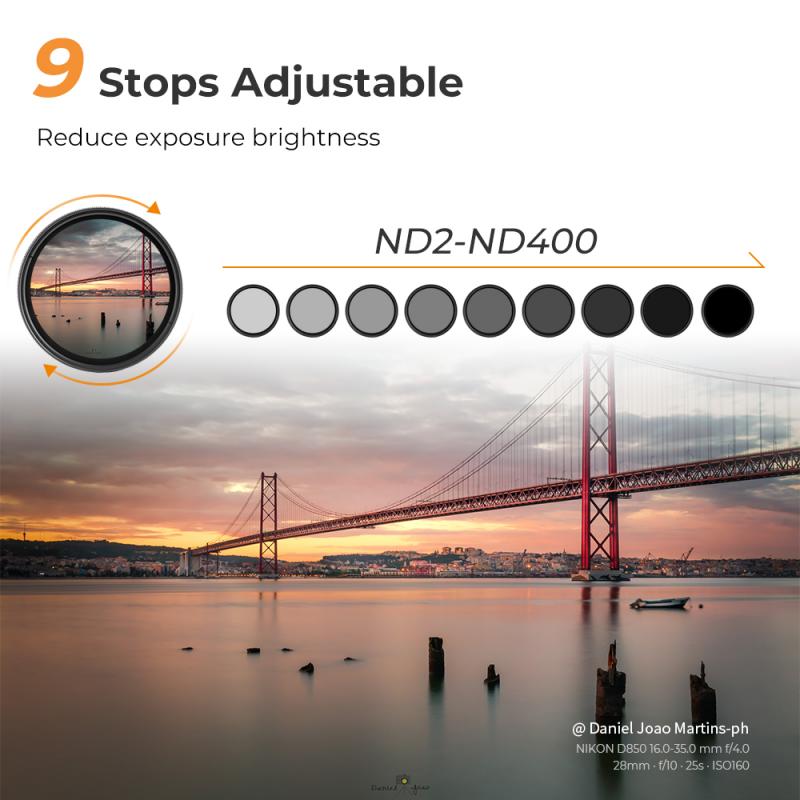
2、 Types of ND Filters and Their Characteristics
ND filter, short for Neutral Density filter, is a crucial tool in photography and videography that helps control the amount of light entering the camera lens without affecting the color or contrast of the image. It essentially acts as sunglasses for the camera, reducing the intensity of light and allowing for creative control over exposure settings.
The primary function of an ND filter is to balance the exposure in situations where there is too much light. It is particularly useful in bright outdoor conditions, such as shooting landscapes in broad daylight or capturing long-exposure shots of flowing water. By reducing the amount of light entering the lens, an ND filter enables the use of wider apertures, slower shutter speeds, or both, without overexposing the image.
There are various types of ND filters available, each with its own characteristics and applications. The most common types include:
1. Solid ND Filters: These filters have a consistent density throughout the entire glass, providing a fixed reduction in light across the image.
2. Graduated ND Filters: These filters have a gradient density, with one half being darker than the other. They are primarily used in landscape photography to balance the exposure between the bright sky and the darker foreground.
3. Variable ND Filters: These filters offer adjustable density, allowing photographers to control the amount of light reduction by rotating the filter. They provide flexibility in changing lighting conditions and are popular among videographers.
4. Reverse ND Filters: These filters have a darker portion in the center, gradually becoming lighter towards the edges. They are specifically designed for capturing sunrises or sunsets, where the brightest part of the scene is near the horizon.
It is worth noting that advancements in technology have led to the development of high-quality ND filters that maintain color accuracy and minimize any potential image degradation. Additionally, some filters are now equipped with anti-reflective coatings to reduce flare and ghosting.
In conclusion, ND filters are essential tools for photographers and videographers to control exposure in bright lighting conditions. With different types of filters available, photographers can achieve creative effects and maintain optimal image quality in various shooting scenarios.
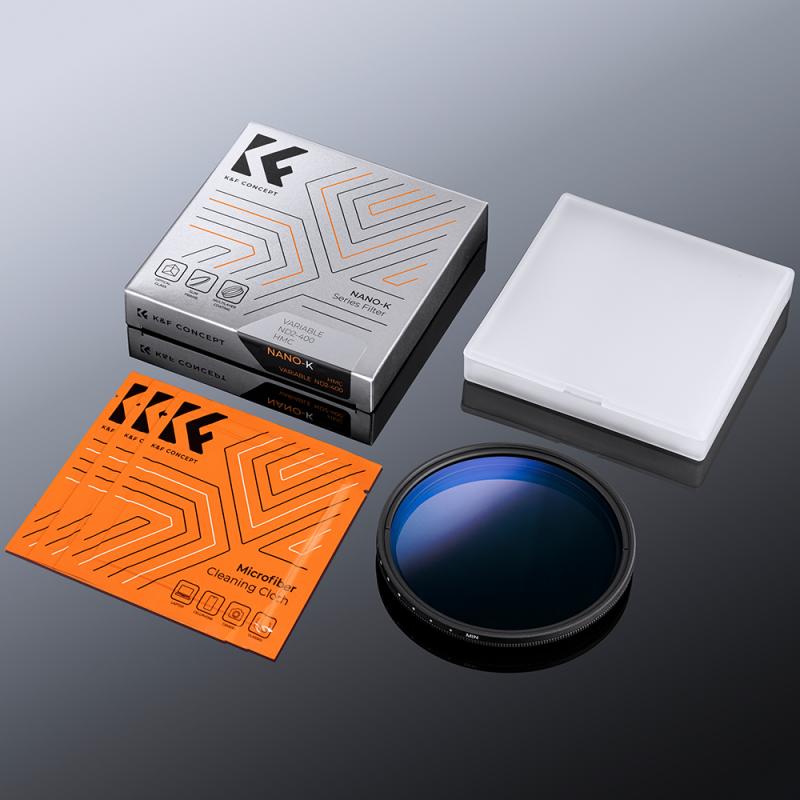
3、 How ND Filters Affect Exposure and Shutter Speed
ND filters, also known as neutral density filters, are essential tools for photographers and videographers. They are designed to reduce the amount of light entering the camera lens without affecting the color or quality of the image. But what exactly do they do and how do they affect exposure and shutter speed?
ND filters work by evenly reducing the intensity of all wavelengths of light, allowing photographers to achieve a longer exposure time or wider aperture in bright conditions. This is particularly useful in situations where the available light is too bright, such as when shooting in direct sunlight or capturing long-exposure shots during the day.
By reducing the amount of light entering the lens, ND filters help to balance the exposure of a scene. This allows photographers to achieve a more even exposure between the bright areas and the shadows, resulting in a well-balanced image with better dynamic range.
Additionally, ND filters can also affect the shutter speed. When using an ND filter, the camera compensates for the reduced light by increasing the exposure time. This longer exposure time can be beneficial for various creative purposes, such as capturing motion blur in moving subjects or creating smooth, silky water effects in landscapes.
It's worth noting that ND filters come in different strengths, usually measured in stops. The higher the number of stops, the more light the filter blocks. This allows photographers to have more control over the exposure and shutter speed, depending on the specific lighting conditions and desired creative effect.
In recent years, there has been an increasing trend in using ND filters for creating long-exposure images during the day. This technique allows photographers to capture stunning images with blurred motion, such as streaking clouds or smooth waterfalls, even in bright daylight conditions. The use of ND filters in this context has opened up new creative possibilities and expanded the horizons of photography.
In conclusion, ND filters are essential tools for photographers and videographers, allowing them to control exposure and shutter speed in bright conditions. They help to balance the exposure of a scene and enable creative effects such as motion blur. With the increasing popularity of long-exposure photography during the day, ND filters have become even more valuable in expanding the creative possibilities of photography.
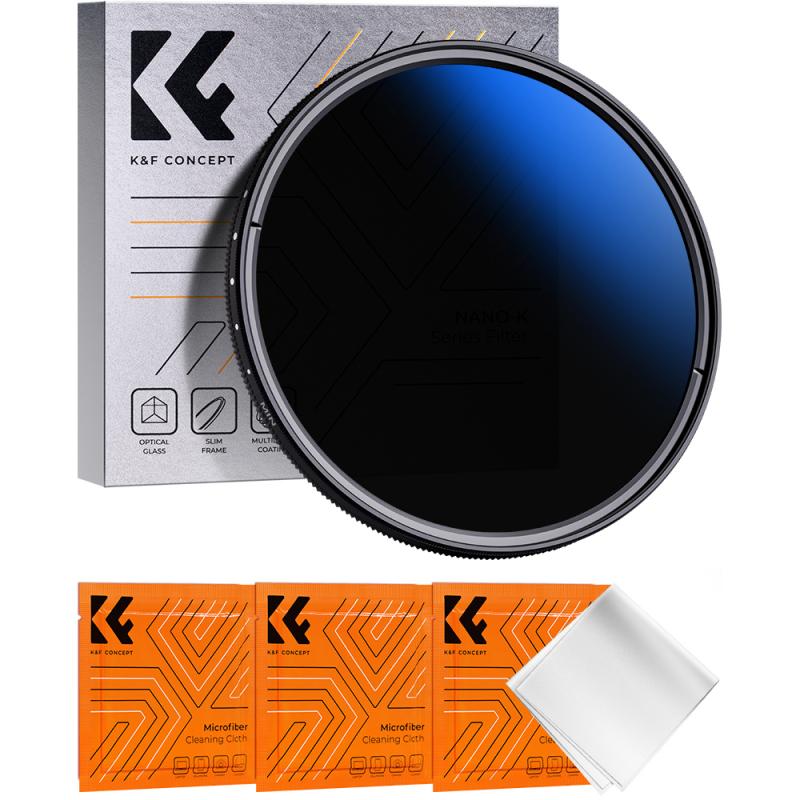
4、 Creative Applications of ND Filters in Photography
An ND filter, short for Neutral Density filter, is a versatile tool used in photography to control the amount of light entering the camera lens. It is essentially a darkened piece of glass or resin that reduces the intensity of light without affecting the color or hue of the image.
So, what does an ND filter do? It primarily serves two purposes: to allow for longer exposures and to control depth of field. By reducing the amount of light entering the lens, an ND filter enables photographers to use slower shutter speeds, resulting in motion blur effects such as silky smooth waterfalls or streaking clouds. This is particularly useful in landscape photography, where capturing the movement of elements can add a sense of dynamism and tranquility to the image.
Additionally, ND filters help photographers achieve a shallow depth of field in bright conditions. By reducing the amount of light, they allow for wider apertures, resulting in a blurred background and a sharp subject. This technique is commonly used in portrait photography to isolate the subject from distracting backgrounds.
Apart from these fundamental uses, ND filters have found creative applications in various genres of photography. For instance, they can be used to capture long-exposure cityscapes, where moving traffic lights create mesmerizing light trails. They can also be employed in architectural photography to remove people or moving objects from a scene by using long exposures that blur them out.
In recent years, ND filters have gained popularity in drone photography, enabling aerial photographers to capture smooth, cinematic footage by reducing the shutter speed. Additionally, with the rise of smartphone photography, manufacturers have started producing clip-on ND filters, allowing mobile photographers to experiment with long exposures and creative effects.
In conclusion, ND filters are essential tools for photographers looking to control light and explore creative possibilities. From capturing dreamy landscapes to isolating subjects and experimenting with long exposures, these filters offer endless opportunities for artistic expression in photography.







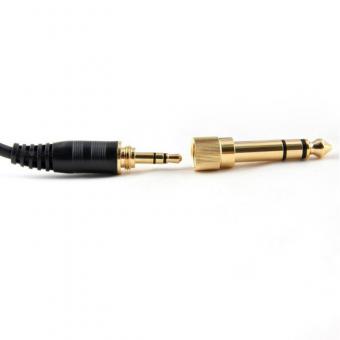




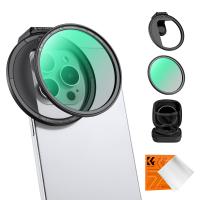


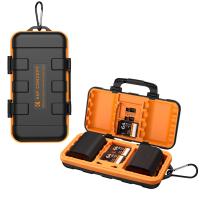


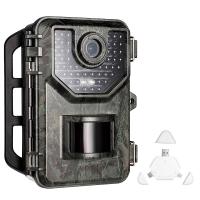








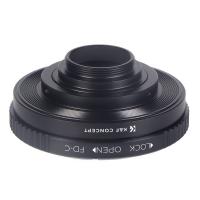

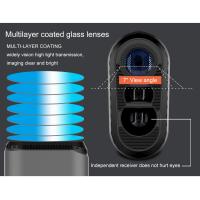

There are no comments for this blog.